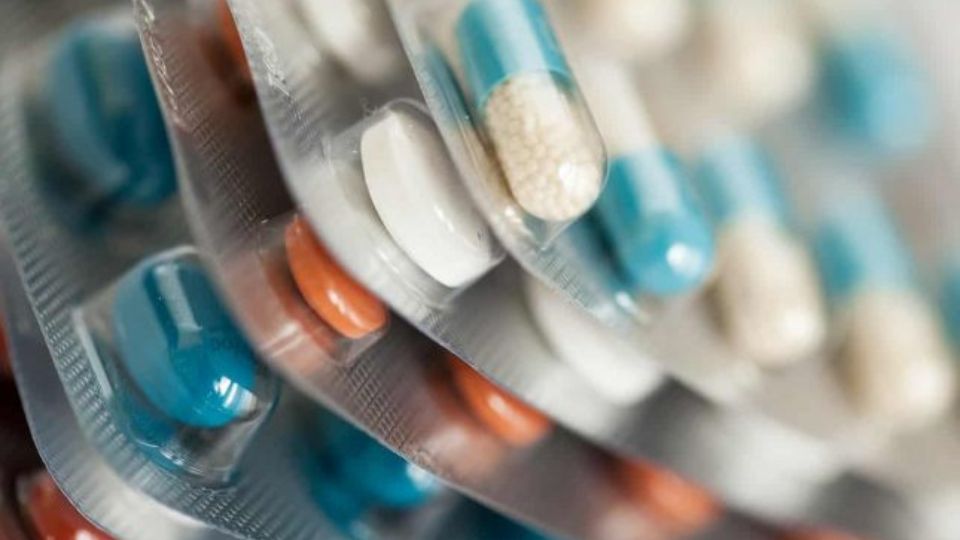Background and History
The FDA (US Food and Drug Administration) was established in 1901 as a bureau of the Chemistry Division of the Department of Agriculture. Five years later, a regulatory function was added to this bureau.
In 1938, a year after the tragic sulfanilamide elixir accident that killed 107 patients due to the use of an untested, toxic solvent, the Federal Food, Drug, and Cosmetic Act was signed into law, regulating cosmetic and therapeutic devices. By 1953, the FDA was affiliated with the Department of Health Education & Welfare.
From the 1950s to the 1980s, pre-market regulation of drugs was strengthened and expanded. As part of these new regulations, material concentration specifications had to be established and tested to increase and assure product safety. Moreover, standards of pharmaceutical material identity and quality were established.
In 1962, as a result of thalidomide use by pregnant women that caused birth defects in thousands of newborns in Western Europe, improved drug safety and efficacy regulations were established. For the first time, US drug manufacturers were required to prove to the FDA the safety and effectiveness of their products before marketing.
Today, the safety and efficacy of every new pharmaceutical product must be proven before it is approved for marketing. FDA jurisdiction covers drugs, devices, biologics, food, dietary supplements, cosmetics, combination products, and veterinary and tobacco products regulation, and registration. The FDA today is organized in five product-based centers:
- the Center for Drug Evaluation and Research (CDER)
- the Center for Biological Evaluation and Research (CBER)
- the Center for Devices and Radiological Health (CDRH)
- the Center for Food Safety and Nutrition (CFSAN)
- the Center for Veterinary Medicine (CVM)
Code of Federal Regulation (CFR)
The FDA receives its authority from the US Congress in order to protect and promote public health and enforce safety laws related to the products it regulates.
US laws are published in the weekly US Federal Register. The US Code of Federal Regulations (CFR) codifies the general and permanent rules and regulations that are published in the Federal Register. The CFR is divided into 50 titles that represent broad areas subject to federal regulation.
It includes several volumes collected from each relevant FDA center. Title 21 (as in 21 CFR…) contains the regulations for Food and Drugs. Each title is further subdivided into sections or chapters on specific topics. For example, series 200 and series 300 deal with pharmaceuticals, series 600 deals with biologics, and series 800 deals with medical devices.
FDA regularly communicates with the food and pharma industries and asks for industry input on draft FDA documents and guidance. After a predetermined industry review period, new or revised laws and regulations are entered into the CFR. The CFR is periodically updated and made publicly available.
FDA also publishes regulatory guidelines, which reflect current FDA thinking about a specific topic and are recommendations to the industry for interpreting and applying the laws. Both draft and final FDA guidance are freely available to the public.
Guidelines are considered not legally binding, but they assist manufacturers in interpreting the legal requirements of the law. Alternatively, a different, justified, risk-based approach may be used by industry to interpret and apply laws and regulations.
Center for Drug Evaluation and Research (CDER)
What is a pharmaceutical drug?
- A chemically synthesized known structure product used to diagnose, cure, mitigate, treat, or prevent a disease
- Articles recognized in the official USP (United States Pharmacopeia) or another compendium (National Formulary, NF)
- Articles intended for use in the diagnostics, cure, mitigation, treatment, or prevention of disease in man or any other animals
- Articles intended to affect the structure or any function of the body of man or other animals
CDER reviews applications for proprietary (brand name), generic, and OTC pharmaceuticals, manages US current GMP regulations for pharmaceutical manufacturing, determines prescription medications, monitors drug advertising, and collects and analyzes safety data about marketed pharmaceuticals.
CDER is responsible for reviewing safety and efficacy data before, during, and after new drug approval. Since 2003, new drugs and biological submission requests have been handled by the Office of New Drugs (prescription, generic, or OTC) for safety and effectiveness before marketing.
CDER monitors approved marketed products and enforce actions to recall and remove low-quality/risky products from the market. In recent years, many biological pharmaceutical products have been developed and submitted to FDA.
To redistribute its workload and coordinate its expertise, FDA restructured its organization, and some products that were previously reviewed by CDER were moved to CBER oversight. CDER regulations are mainly included in sections 200 and 300 of the 21 CFR
Center for Biological Evaluation and Research (CBER)
What is a biological pharmaceutical product?
A biological product is a product from a living source such as humans, animals, plants, and microorganisms, that prevent, treat, or cure disease or injuries in humans. Biological products are subjected to license under the public health service act. CBER regulations are mainly included in section 600 of the 21 CFR
New Drug Development
New drug discovery and development is a prolonged process that requires high capital investments. New drug development begins with drug discovery, synthesis, and screening processes.
The screening process usually will be supported by software and may include thousands of chemical and biological compounds that will be screened in vitro and other models that will enable “go”/”no-go” decisions.
The screening process can include synthetic or natural compounds, existing drugs, or investigational drugs that failed in various clinical stages but might be suitable for other therapeutic indications. At the end of the drug candidate screening process, the lead candidates are chosen for further research, based on bioinformatics, statistical techniques, and additional models.
After several drug candidates are discovered, a study of their chemical/biological/physical and other relevant properties of the investigational drug product is conducted. Moreover, investigational drug product synthesis and purification methods should be developed. Drug candidates are usually tested and screened using in vitro models.
After in vitro model testing, potential drug candidates are tested again using in vivo models (pre-clinical stage) for short- and long-term experimental animal studies, in order to evaluate the new investigational drug product efficacy and adverse effects (safety).
In short-term animal studies, the researcher will collect data regarding the investigational drug product absorption, metabolism, extraction, and short-term toxicity (“ADME” and “Tox” studies).
Long-term animal model studies analyze single- and repeat-dose effects on reproductive toxicity, carcinogenicity, carcinogenicity, and genotoxicity (mutations or mutagenicity), immunotoxicity, local tolerance, and environmental effects of the investigational drug product in different animal species.
FDA minimal requirements at the pre-clinical stages are a drug pharmacological profile, acute toxicity in two species, and short-term toxicity studies. Usually, no formal obligation for good manufacturing practice (GMP) is required by the FDA at this stage. However, good laboratory practice (GLP) documentation is essential for regulatory submission.
FDA requires GLP documentation for safety studies only (not for in vitro/in vivo efficacy studies) including animal toxicity, genotoxicity, supporting toxicokinetic and safety pharmacology studies in the pre-clinical stage, based on 21 CFR part 58 “Good Laboratory Practice for non-clinical laboratory studies”, to ensure with a high level of confidence that the investigational drug product is safe for clinical trials in humans.
GLP enables regulatory authorities to assure that the data submitted is a true reflection of the results obtained from the study and can therefore be relied upon as part of the product safety and risk assessments.
Moreover, adhering to a high standard of work and according to GMP/GLP principles at the pre-clinical stage will ensure that the results are reliable, and may also provide higher levels of confidence and solid information for the company during any due diligence processes by potential investors.
Although no FDA approval is required for pre-clinical stages, at the IND (Investigational New Drug) stage, a retrospective review of the pre-clinical data will be conducted by the FDA.
Therefore, GLP and GMP including good documentation practices (GDP) and other GxP requirements should be met, unless any additional animal testing may be required by the FDA before initiation of the (human) clinical stage. FDA pre-clinical guidelines are detailed in 21 CFR part 312.160.
Pharmacodynamic (PD) & Pharmacokinetics (PK) studies: PD studies analyze the effect of a drug on the body, while PK studies analyze the body on the drug (ADME; absorption, distribution, metabolism, and excretion).
Pre-clinical stage termination: The main purpose of pre-clinical trials is to prove that the investigational drug product is safe (non-toxic) prior to clinical stage initiation, in addition to efficacy (pharmacology).
FDA is not involved in the pre-clinical stages, but may retrospectively review the new drug development stages as part of the new investigational drug clinical stage, and usually focus on the pre-clinical drug safety results.
After the pharmacodynamic (desired and non-desired effects) and toxicity profiles of the investigational drug product data are received, the clinical stage can be initiated. At the end of the pre-clinical stage, the sponsor can arrange a meeting with FDA, and then send documents and questions for the clinical stage of the investigational drug product.
The Quality Assurance (QA) function at a company pursuing drug development is responsible for assuring the development process stages are being conducted in compliance with the regulatory standards required at the various development stages.
QA should cover quality issues related to, among others, utilities, equipment, personnel, analytical methods, stability studies, procedures, records, monitoring, inspection and control, and qualifications.
Investigational New Drug Application (IND)
After termination of the pre-clinical stage, all pre-clinical data and a detailed clinical trial plan (in humans) are submitted to the FDA as part of the Investigational New Drug application (IND).
It is recommended to add to the IND an “investigator brochure” with information about possible drug effects for use by the Institutional Review Board (IRB) and clinicians that will perform the clinical trial. If no response is received from the FDA within 30 calendar days, the clinical trial can be initiated.
IND requirements and content: The IND will include an introduction, investigator brochure, study protocols, investigational plan, previous human experience, pharmacology and toxicology, investigator, facilities and navigational review board (IRB /ethics committee), manufacturing and control, additional information sections.
The IND will include data that will cover the investigational drug chemical composition, pre-clinical data, investigator(s) qualification, clinical studies protocols, informed consent and IRB information, animal pharmacology, and toxicology data, chemistry manufacturing and controls (CMC), previous human experience.
For every clinical investigator, FDA form No. 1572 should be submitted. Informed consent is as defined in 21 CFR part 50, IRB review, and approval and reporting as defined in 21 CFR part 56 are required. The clinical study must be conducted according only to the relevant, current, approved protocol version.
Changes in the protocol must be controlled, reviewed, and approved by the sponsor. Records should follow good documentation practices (GDP), be managed in a controlled manner, and comply with 21 CFR part 312 requirements.
EU Clinical Trial Application (CTA): The CTA is the European equivalent of the IND. In Europe, the Qualified Person (QP) should approve clinical batch release before using the investigational drug in clinical trials.







